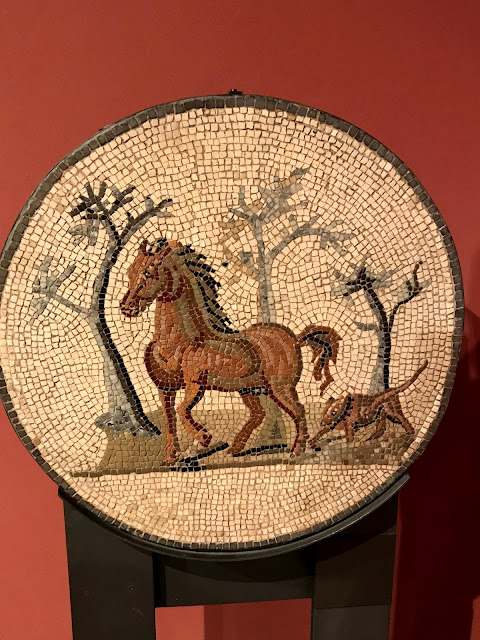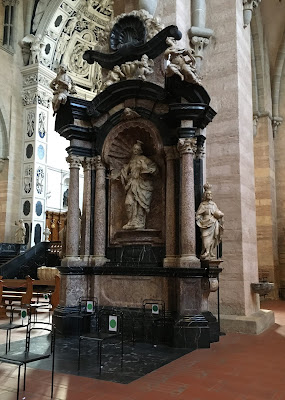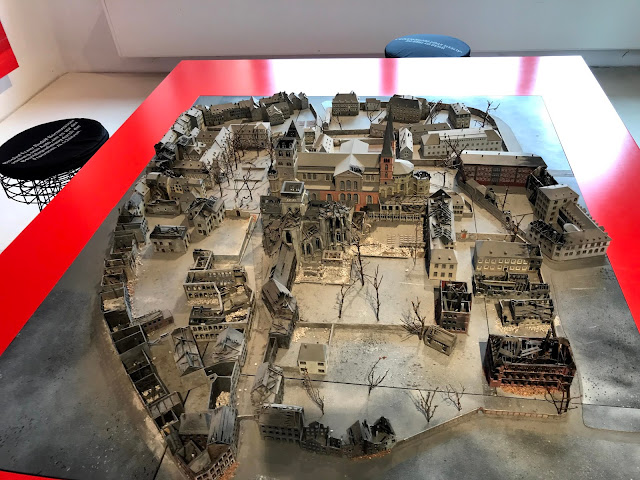Trier is well over 2,000 years old. A Celtic tribe called the Treveri first settled this area and were subdued by the Romans around 58 BC. As the largest Roman settlement North of the Alps, it grew to an estimated 80,000 people at its peak. It is claimed that it is the oldest city in Germany.
The diorama below shows the size of the city under Roman rule. The Rhein River borders the city.
One feature of large Roman cities were round amphitheaters and what was called a "circus", the large oval structure shown where chariot races were held.
When the Romans were defeated, eventually this famous gate to the city was transformed into a Christian church with significant structural additions.
White plastic pieces in this model show where structures were added to make this gate into a church. In 1804, the French Emperor Napoleon ordered the church taken down to reveal the gate.
The Roman arches of this building were graced by a beautiful magnolia tree in bloom.
The size of the Roman Empire was huge as this map shows. The darker area represents the range of Rome's rule.
Roman statues and ancient Roman tomb markers were very ornate.
The tomb for the fellow below, highlighted his love of hunting.
This ancient grave contained the full skeleton of a warrior, his variety of weapons and something in the jug to sustain him in the after-life.
The Trier Cathedral
These very old and ornate Bibles were on display in a museum within this huge church. It should be noted that these were dated to be from 1170 AD, almost 400 years before Gutenberg began printing first editions of the Bible. The general public would have been unable to read scriptures themselves and relied completely on their priest to teach them. It is so wonderful to have scripture so available these days, even on our mobile phones.
This signage indicated we could view the robe that was supposedly worn by Christ. Once we walked up the stairs, we could peek through a small window to see "something" on display. Holy relics like this inspire pilgrimages to view them.
Here is a picture we found on the internet from pre-Covid times where people could view the robe.
Trier suffered much of the over 2,000 years of it's existence by the many wars that have ravaged Europe. World War II bombing raids by British bombers laid waste to much of the town. The bomb shown above is similar to those used. The German people showed much resolve and have rebuilt their cities and economy.
The quiet streets and beautiful architecture gave way to thoughts of days gone by.









































No comments:
Post a Comment